When troubleshooting electronics from the early transistor era, you may sometimes suspect a defective transistor, but when you check it with a transistor tester, everything appears to be in order. This may be confusing and frustrating, but quite often there is a simple reason and solution:
In this case, a portable radio from around 1960 had no radio reception at all, while the audio stage was working fine. Oscilloscope measurements revealed that the local oscillator was at a standstill.
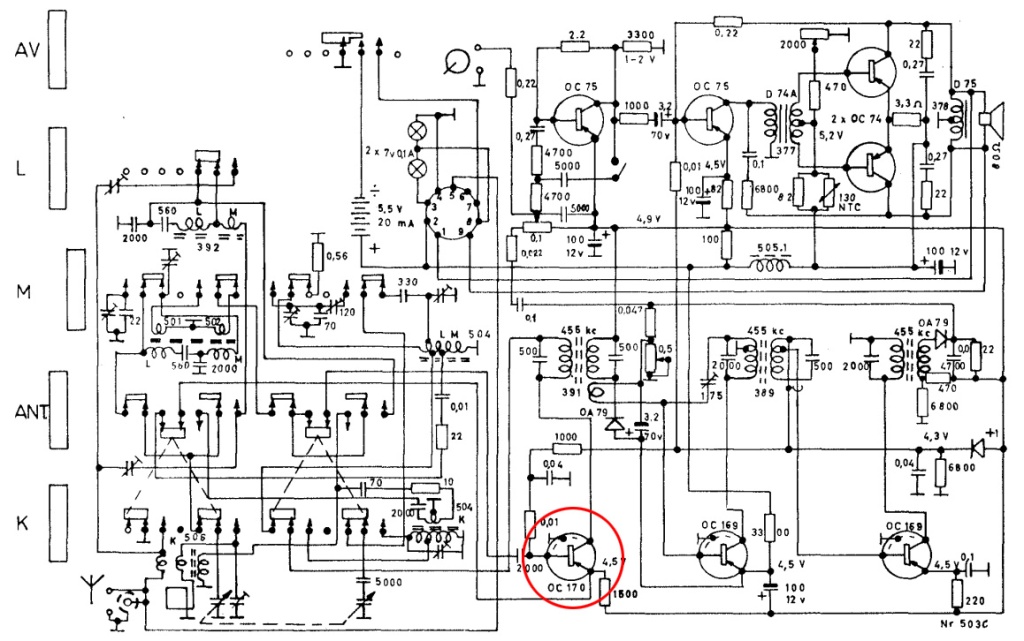
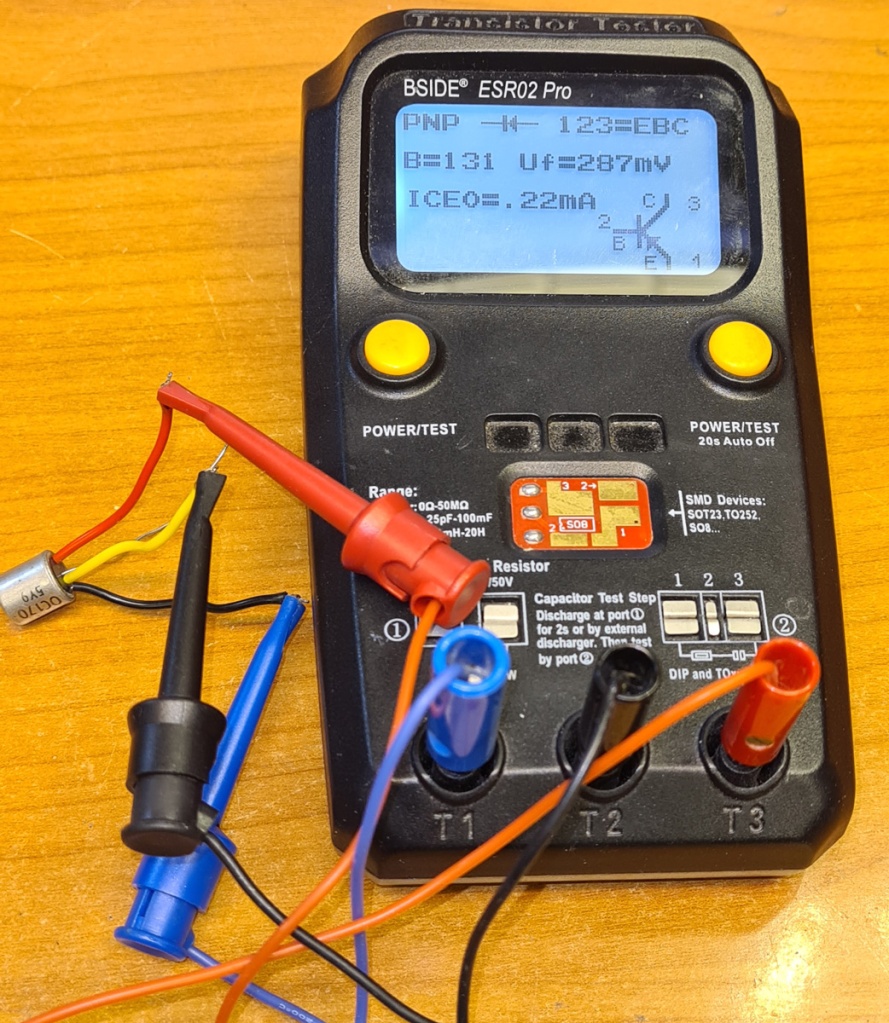
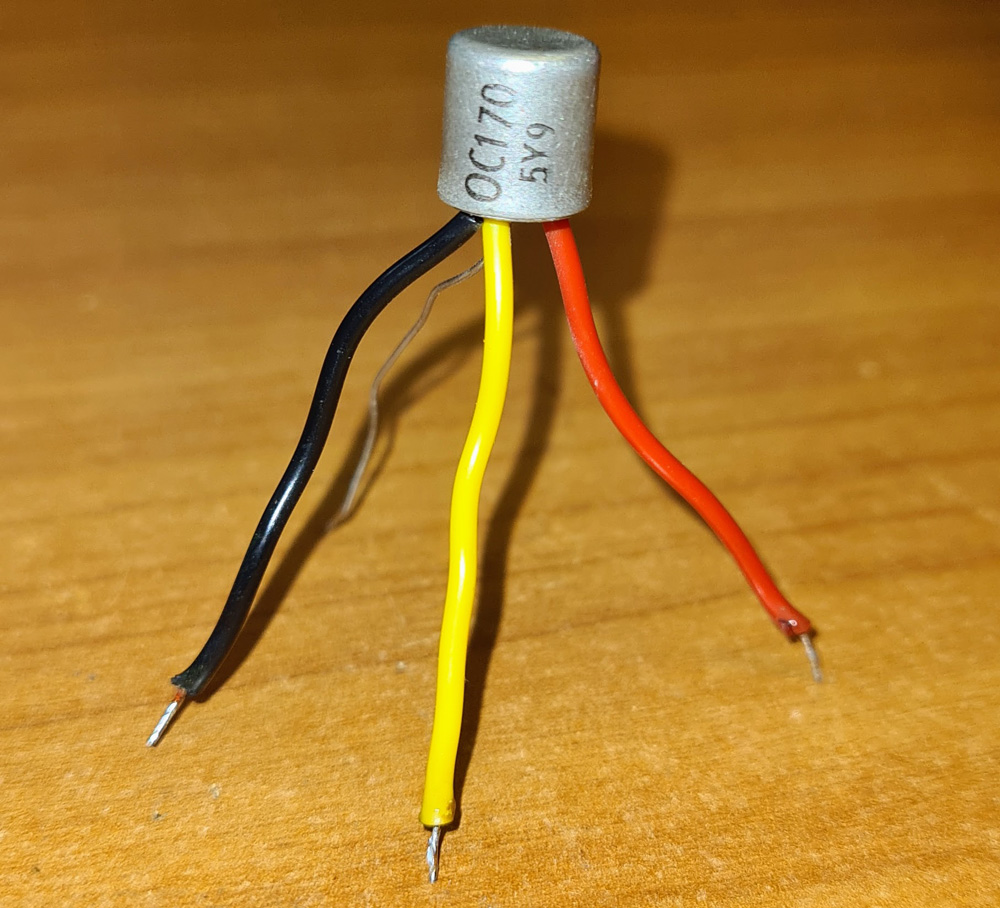
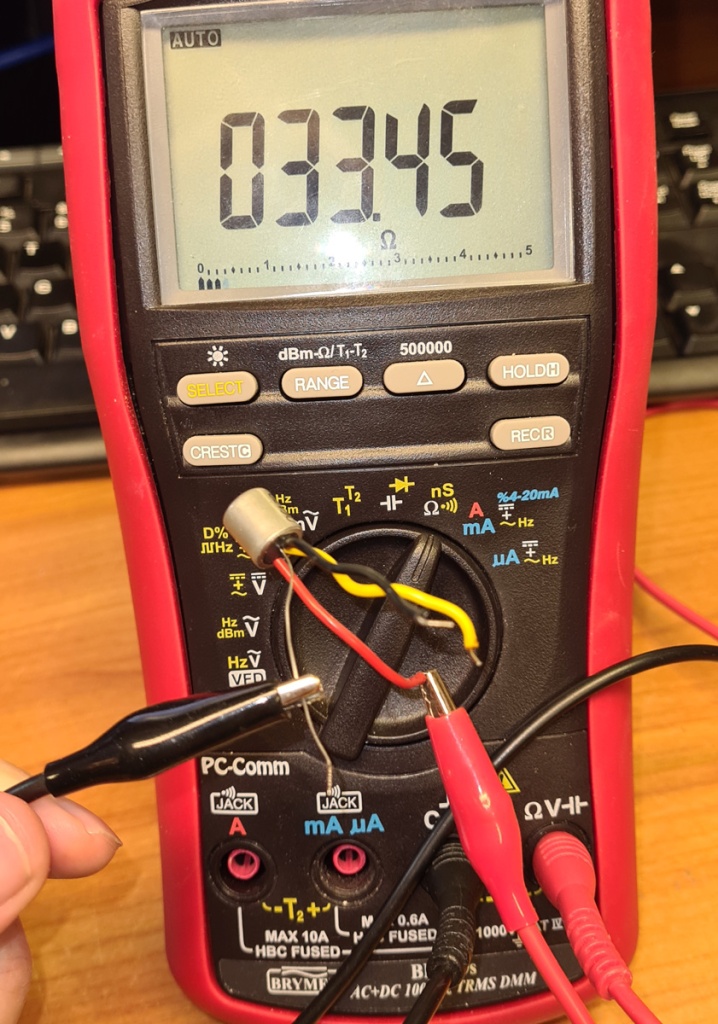
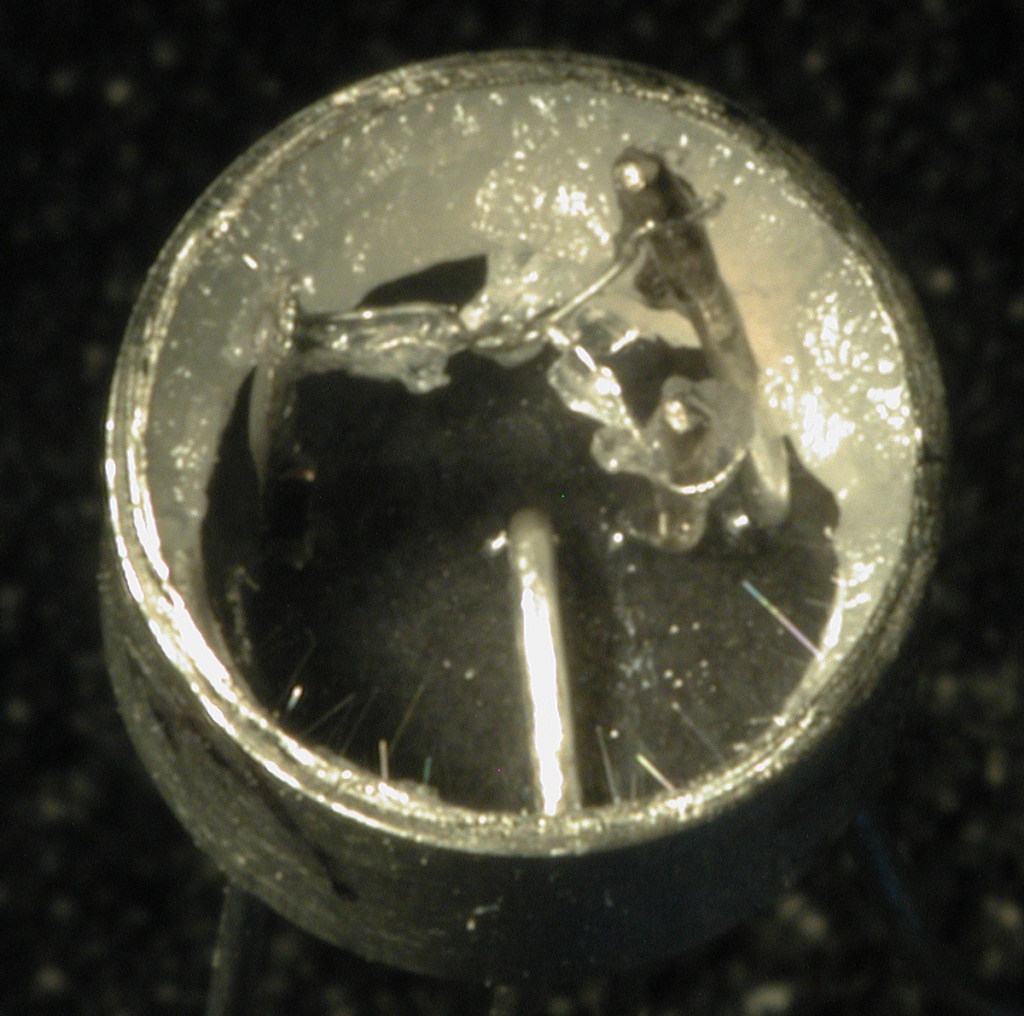
Sometimes giving the transistor a tap with e.g. a screwdriver may cause the tiny whiskers to break off, and bring the transistor back to life. Some technicians choose to cut off the forth led. This may bring the circuit back to life, but then it’s likely to pick up more noise.
A more efficient method is to use electric current to burn off the whiskers. The procedure is as follows:
- Connect the E, B and C terminals together. I like to temporarily solder them together to make sure they are properly shorted.
- Hook the transistor up to a lab PSU, with its case lead to one PSU terminal and E/B/C to the other terminal. Polarity doesn’t matter.
- Turn the power on. Around 30V is appropriate. For a brief moment, a high enough current is passed through the whisker to burn it off. The process happens so quickly, that you’ll probably not notice any current draw on the PSU ammeter.
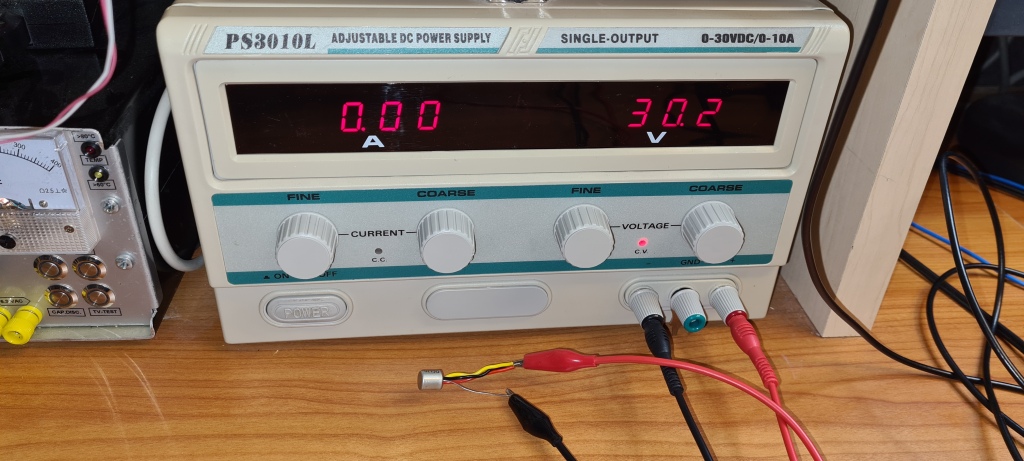
4. Measure the resistance between the case and each transistor lead again. If the process succeeded, the resistance shall be higher than a multimeter can measure. This is looking promising.
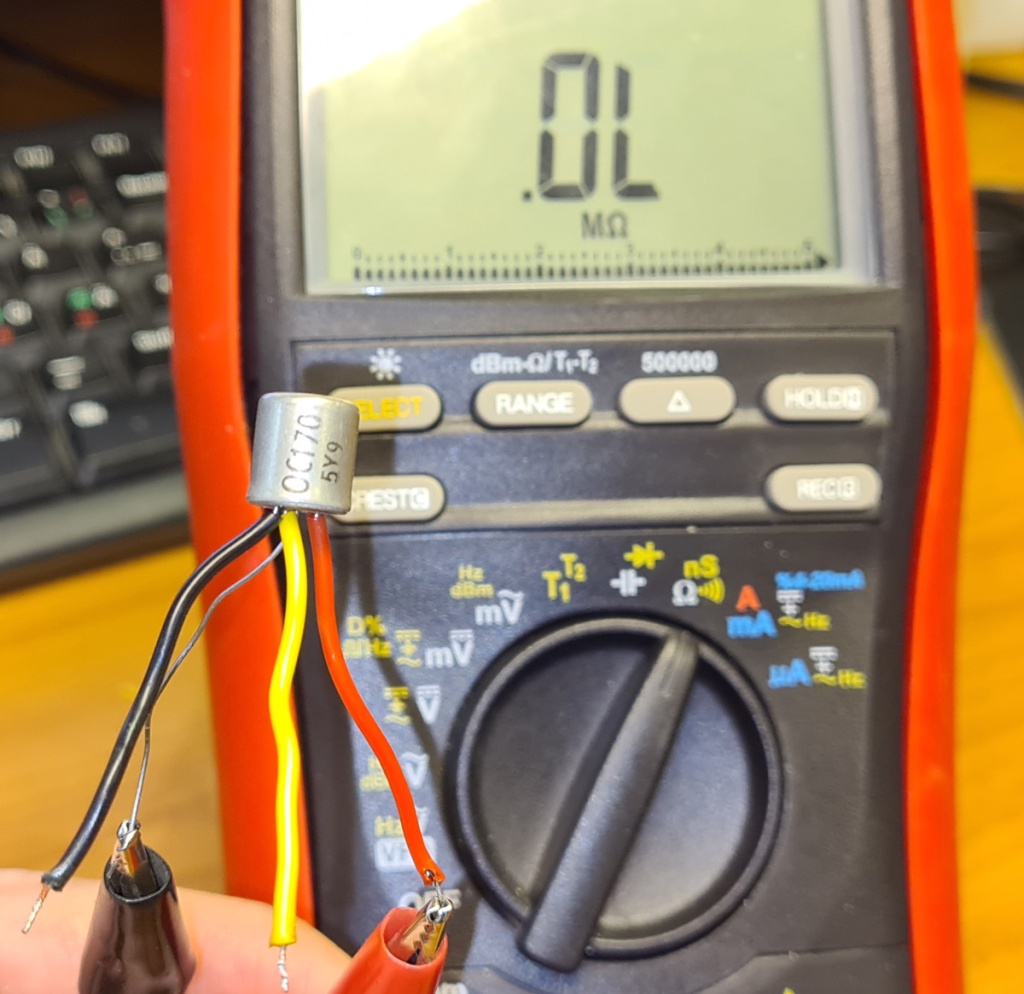
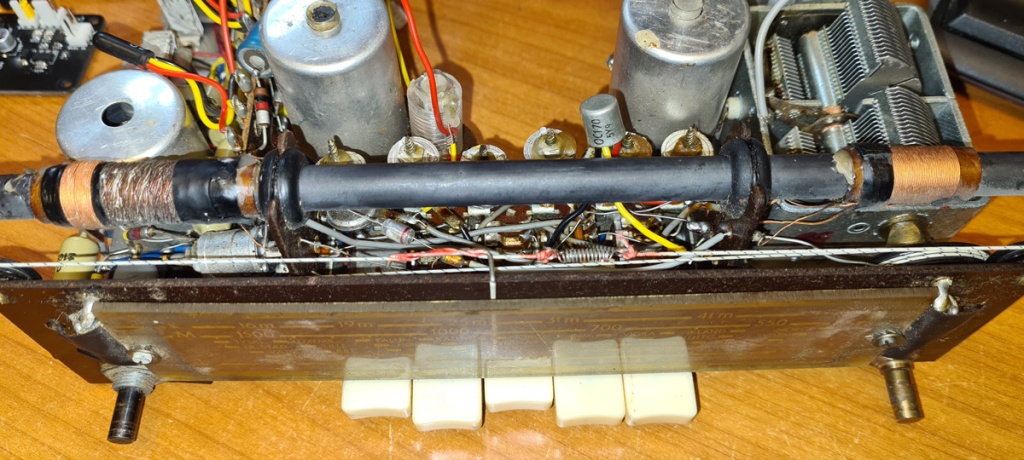
Will it last? Probably not forever. The growth of tin whiskers will continue, and sooner or later one of them may grow long enough to cause a short. Using a NOS transistor as replacement doesn’t necessarily make things last longer, as the same crystalline process happens when the components are unused.
It has, however, been 4-5 years since the first time I used current to burn of tin whiskers, and the same transistor is still going strong.

Leave a comment